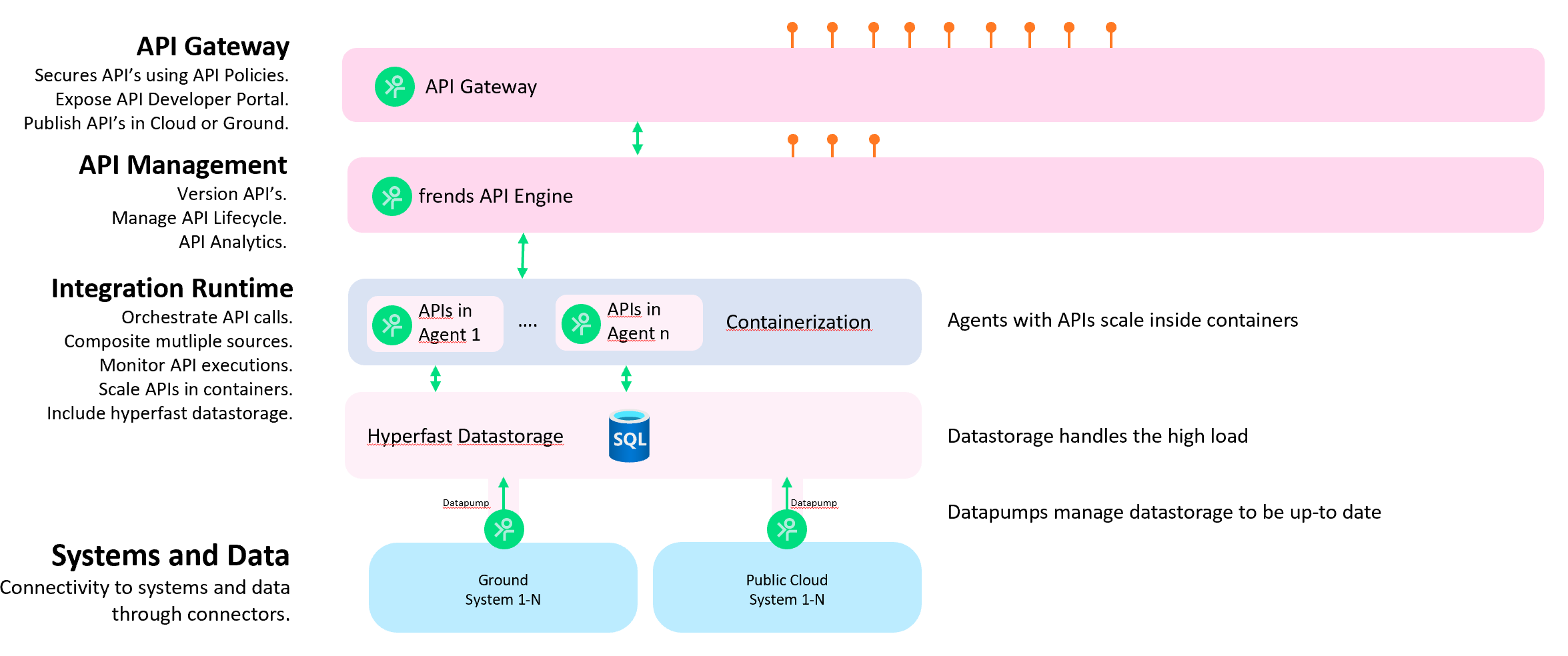Digital Integration Hub - enabler of digitalization
Is your old legacy systems preventing your digitalization? Read how digital integration hub solves this much easier and cost-effectively than microservices.


What is Digital Integration Hub?
In 2021 Gartner described an approach or system that can enable digitalization with the old legacy systems using integration platform. This approach is called Digital Integration Hub. The need is obvious - the demand for digital services and channels are on the steady rise from business reasons. The need rose even more via COVID-19. Now, the most traditional and slow-moving companies have been forced to think about how to approach their customers.
Digital Integration Hub (DIH) is an approach, where APIs act as front-end facades to hide legacy systems. The APIs follow the best practices of microservice architecture (MSA) and represent simple atomic business functions. The API itself might get the data from, or write it to, one or more core line-of-business systems. APIs in Digital Integration Hub are functions like "getCustomerData" or "orderProduct". APIs that use several data sources to create a single data object are composite APIs. It is quite simple to use frends eiPaaS and create API with integrations to ERP and CRM to retrieve and create a single data structure representing "customer".
If we weld these APIs directly to the backend systems, we will end up with something called coupled system. Suppose your APIs are facing public internet and are used in, e.g. customer mobile apps. In that case, you'll end up with problems as the load eventually overloads the backend system.


The idea in Digital Integration Hub - or DIH - is to remove this tight bound between API and existing legacy and move to an uncoupled architecture. In frends, the agent may run in a container environment and scale there - the legacy data source interfaces don't scale - unless we do something. In frends DIH, we pump the crucial business data to an intermediate database (e.g. in-memory database) and APIs connect to this database. Data pumps - frends agents with specific orchestrations inside - read data from multiple data sources and create data structures to the intermediate data storage for fast reading. Suppose the API is updating data in the legacy systems, e.g. "orderProduct". In that case, the data pump orchestrations handle the complexity of multiple source updates. For example, purchase orders are coming through API, and simultaneously sales representatives still use the legacy systems' old UI. This lead to data consistency problems inside the old legacy system. Data pump - or more precisely, the logical and business rules inside it - solve these conflicting updates. If there are no other sources of writers to the same data that API updates, a message queue behind the facade API might be enough.
Digital Integration Hub enables good old three-layer architecture with the old legacy systems. Even file-based vintage systems may be digitalized if a little latency in data is allowed. Three-layer architecture also enables a graceful system retirement. As the communication to the old system is moved to happen via API, we can update the core system to a new one without the users even noticing the change. The facade hides the change. To change go unnoticed of course requires that the new system has the same data or the same data can be found somewhere in the core systems of an enterprise.
With Digital Integration Hub, it is possible to extend the lifetime of an ERP even decade.

Antti Toivanen
Frends integrationsAuthor has over 23 years of experience in integration and process automation
About this project
